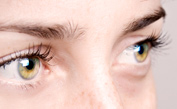
LASIK surgery can be performed on the majority of patients that have refractive errors. However, some patients are not suitable candidates for treatment. In this post, I review the factors that I take into consideration when evaluating potential patients during the LASIK screening process.
Age
FDA guidelines require that LASIK patients be at least 18 years of age; patients that are at least 18 years of age are less likely to have significant changes in their vision.
It is also important that my Virginia LASIK patients be aware that they will develop presbyopia, or age-related farsightedness, by the time that they reach their 40s. This condition results from a weakened ciliary muscle that inhibits the patient’s natural focusing ability, making it difficult for patients to see near objects clearly.
Stable Refraction
If your vision prescription has changed within the last year, you are not considered an ideal LASIK candidate. Patients that undergo surgery should not experience any changes in their refractive error for one to two years.
High or Low Refractive Error
If you have very little refractive error or a high degree of refractive error, you may not be a good candidate for LASIK surgery.
Pupil Size
Pupil size can have a major effect on the outcome of the patient’s laser vision correction procedure. Those that have large pupils in dim conditions may experience poor night vision, halos, starbursts, and other permanent side effects after surgery.
Corneal Conditions
Patients that have thin, scarred, or damaged corneas are not suitable candidates for LASIK surgery. However, these patients may be able to undergo alternative treatments such as PRK or the placement of permanent contact lenses (ICLs).
Tear Production
If you have poor tear production or dry eyes, LASIK may not be right for you. The LASIK procedure could exacerbate the problem and make dry eye worse.
Medical Conditions
You are not a good candidate for LASIK if you suffer from serious medical conditions such as autoimmune disease, diabetes, hypertension, or any illness that slows healing; Patients that suffer from eye conditions such as cataracts or glaucoma are also not ideal LASIK patients.
Medications
Certain medications can delay healing after surgery; if you take steroids, blood thinners, or other medications that could slow healing, you may need to halt use for a few weeks before and after surgery or consider an alternative treatment option.
Cost
Traditional LASIK surgery costs an average of $1,500 nationwide. The cost can increase based on the area of the country in which surgery is performed, the skill of the selected surgeon, and the degree of the patient’s refractive error. Custom LASIK can cost up to two times as much as traditional LASIK. Since LASIK is considered an elective health care procedure, patients must pay for all costs associated with treatment out-of-pocket. My patients can pay for LASIK with credit cards or financing plans to break up the cost of treatment over a period of time. However, if the cost of LASIK is not in your budget, you may want to consider less expensive alternatives such as the use of contact lenses or glasses.
If you are interested in undergoing LASIK surgery, contact my practice today for a consultation.



